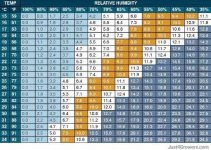Fred Sanford
Member
I used to run co2 and aim for the vpd values and I struggled terribly for a couple years. Then my brother bought a tent and grew better weed than me with nothing but an exhaust fan on 24/7. After that I saif fuck vpd, idled my co2 burner and put the environmental controller on constant exhaust. Problems solved. Anyone looking for a 4 burner propane co2 genetator?






